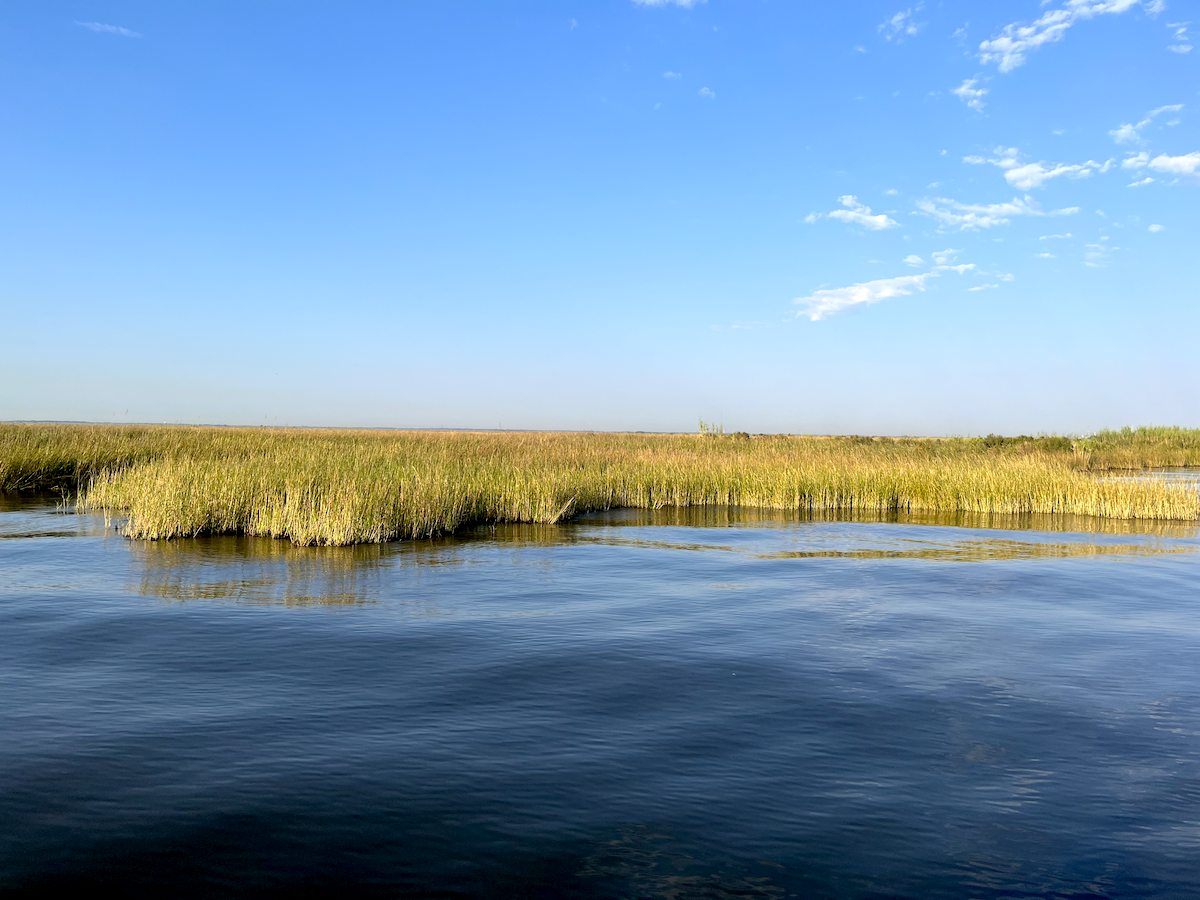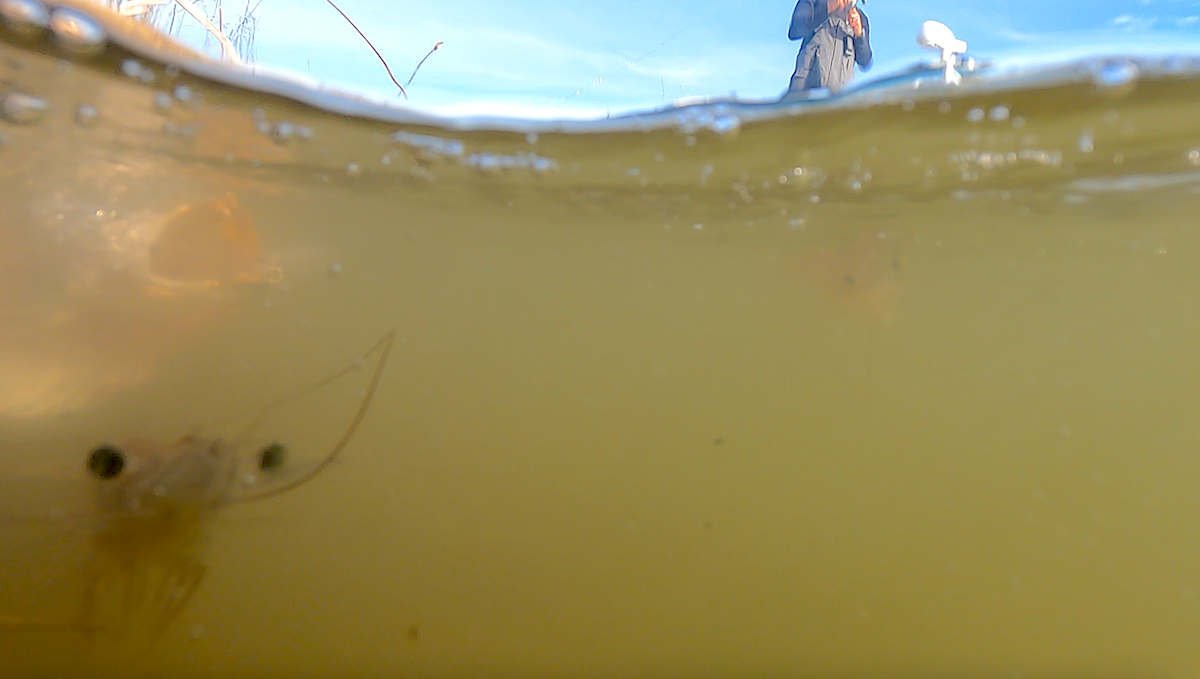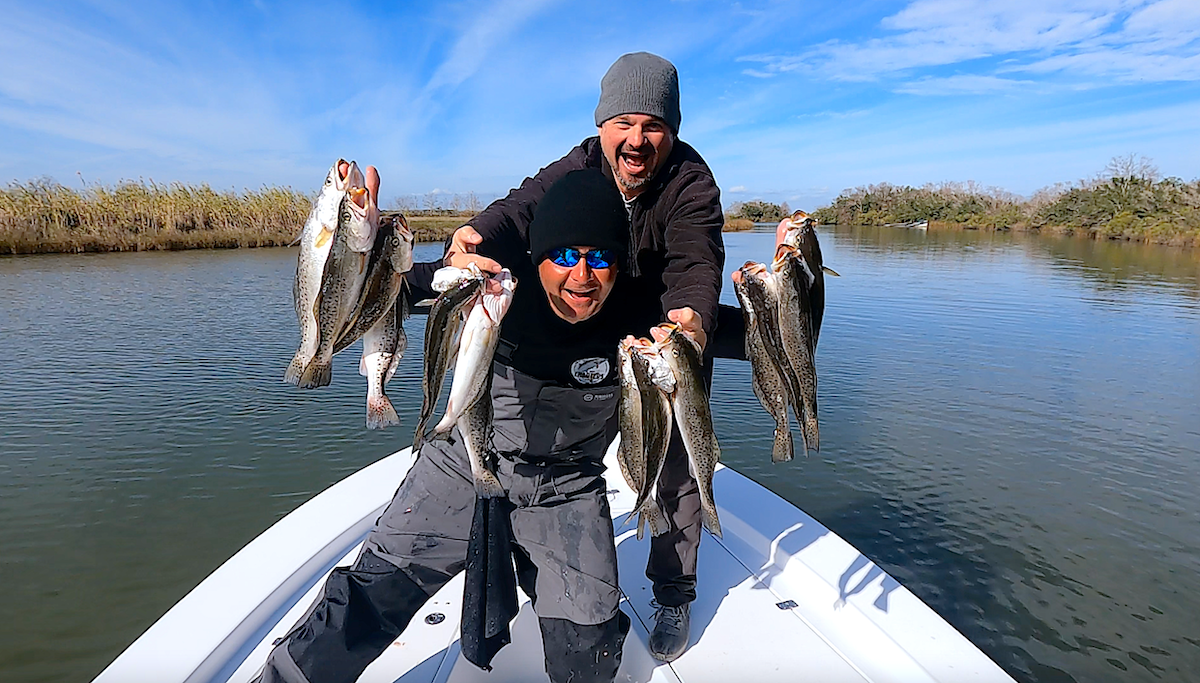Louisiana’s White Shrimp Migration: The key to catching speckled trout in the marsh
Keith Lusher 10.28.24

Everything was perfect. The sun was barely peeking over the horizon. A slight breeze was blowing out of the north. The water temperature read 73 degrees on the Garmin. As we cut across Lake Borgne and drew near to the shoreline, our heads began to swivel back and forth scanning the horizon. Then it happened. At the same time, we both spotted a large flock of seagulls dive-bombing a patch of water exploding with surface action.
It’s fall in Southeast Louisiana and speckled trout anglers know if they can find the shrimp, they can find the trout. The white shrimp migration has begun and for those who know how to fish it, this is the most exciting time to target speckled trout.
Danny Hunter of New Orleans Best Charters has been fishing the marsh near the Rigolets his entire life and said it’s his favorite time to chase specks. “For me, this is it! Nothing else comes close,” he said.

The perfect storm
During the white shrimp migration, Hunter fishes the entire marsh stretching from Unknown Pass to Procter Point. It’s there that he finds the “interstate” used by the shrimp to exit the marsh grass where they hide during the summer months. The shrimp are in the juvenile stage and generally measure 3-4 inches before they move to deeper, saltier water to spawn as adults. “These shrimp are hunkered down in the marsh and the shallow duck ponds during the late summer months,” Hunter said. “Then all heck breaks loose on them in late September and October when they exit.” During this time multiple factors come together to create the perfect storm. “What you have is a bunch of things happening at the same time,” Hunter said. “First you have the speckled trout returning into the marsh from the deeper areas like Lake Borgne and the Mississippi Sound.” As the trout migrate back into the marsh, the shrimp begin to make their way out of the marsh and into the deeper water. This results in a collision course for the trout and shrimp. Another important factor in this equation is the cold fronts that start to blow through in the fall. “When that south wind switches over and blows out of the north, it pushes all of the water out of the marsh and into the canals. This accelerates the shrimp migration as it forces all the shrimp out of the marsh.

What to look for
When fishing the shrimp migration, Hunter focuses on deep channels like the Intracoastal Waterway and Lake Borgne. These are relatively deep channels ranging from 10-30 feet deep. “I like to cruise the canals looking for cuts that drain out of the marsh. So basically I’m looking for intersections where a smaller canal connects to the main channel. That’s where the water is going to be flowing and the shrimp with it,” he said. In the fall, all of these cuts have the potential to produce trout, however, Hunter added sometimes there’s no need to waste time on fishing any of them because of the seagulls. “If you can find the seagulls diving, more than often, that’s where the trout are feeding on the shrimp,” he said.

Fall set-up
Hunter’s setup is a PENN Battle III 2500 spinning reel loaded with 20-pound Daiwa J-Braid X8.
During September and October when trout are feeding heavily on shrimp, Hunter prefers using plastic under a cork. “I use a beaded Undertaker Cork and tie on a 1/4 jig head. On the head, I thread on something called a Finger Lure which is a 3.5-inch plastic shad made by Blue Collar Baits,” he said. Hunter opts for a plastic shad over a shrimp lure because he believes it’s important that the lure stands out against thousands of swimming shrimp. “When these trout are feeding on shrimp the last thing you want to do is match the bait,” he said. “A brightly colored shad is the perfect lure to distract those trout in the middle of a feeding frenzy,” he said. For most anglers in Southeast Louisiana, live shrimp is king when it comes to live bait. However, Hunter recommends saving your money. “When everything comes together like this it’s not necessary to use live shrimp. You have the birds diving.

You have the shrimp skipping across the water. The water temperatures are in the 70s. You could probably catch these fish with a bare hook if it’s shiny enough,” he said. Hunter said there is another downside to using live shrimp as bait in the fall. “When these feeding frenzies occur, there are usually some ladyfish mixed in. If you use live shrimp, you’ll waste a lot of time catching those ladyfish,” Hunter said.
Hunter said he’s been catching limits of trout on nearly every trip this fall and expects the bite to last until the shrimp have all left the marsh in November. Until then there is plenty of time left to get in on the excitement of catching speckled trout feeding on brown shrimp.

